2024 NFL Draft class rankings: Steelers, Bears, Eagles, Chargers earn top grades; Falcons flummox
- 1-32 rankings
- AFC East
- AFC North
- AFC South
- AFC West
- NFC East
- NFC North
- NFC South
- NFC West
Why provide instant grades on the selections of prospects who have yet to take an NFL snap? Well, you’re reading this, aren’t you? Considering the makeup of every roster and the factors surrounding each pick, Gennaro Filice and Nick Shook rank the 2024 draft classes, 1-32. Keep in mind that these grades are based on draft hauls alone — picks traded for veteran players were not taken into account.

Round 1: Troy Fautanu, OT, Washington (No. 20 overall)
Round 2: Zach Frazier, C, West Virginia (51)
Round 3: Roman Wilson, WR, Michigan (84) | Payton Wilson, LB, N.C. State (98)
Round 4: Mason McCormick, OG, South Dakota State (119)
Round 6: Logan Lee, DE, Iowa (178) | Ryan Watts, DB, Texas (195)
SHOOK: General manager Omar Khan has absolutely crushed this offseason, restocking the quarterback position with two quality options for both the short- and long-term, then unabashedly investing in their protectors in the draft. Pittsburgh had seven picks in the 2024 draft and spent three on offensive linemen, demonstrating a clear emphasis on the trenches (while also catering to my soft spot). Khan began by snagging a top tackle in Fautanu, a pick that probably wouldn’t be possible in drafts that didn’t include six selections of quarterbacks in the first 12 picks. Pittsburgh capitalized by taking Fautanu, adding him to a line that includes last year’s top pick, Georgia tackle Broderick Jones, giving the Steelers an instant competitor for Dan Moore, and as I expect, two bookend tackles for years to come. Khan wasn’t done there, though, spending his next pick on a center and answering another lingering question following the departure of Mason Cole. He even added depth behind veteran guards James Daniels and Isaac Seumalo when he selected McCormick, hitting every checkmark on the offensive line list. The best pick of this whole class might end up being Wilson, a dynamo of a receiver who terrorized defenses while at Michigan. He should complement big-play artist George Pickens quite well, giving Russell Wilson and/or Justin Fields multiple options, especially after the team parted ways with Dionate Johnson. Linebacker Payton Wilson completes Khan’s transformation of Pittsburgh’s defensive second level, and if he can overcome medical concerns, he owns the speed necessary to play sideline-to-sideline on early downs and rocket through the line as a third-down blitzer. And finally, Cam Heyward is going to retire eventually, so it was worth taking a flier on Lee. Well done, Omar.

Round 1: Caleb Williams, QB, USC (No. 1 overall) | Rome Odunze, WR, Washington (9)
Round 3: Kiran Amegadjie, OT, Yale (75)
Round 4: Tory Taylor, P, Iowa (122)
Round 5: Austin Booker, DE, Kansas (144)
FILICE: At this time one year ago, Caleb Williams was the presumed No. 1 overall pick. Then we went through another football season … and Caleb Williams was the presumed No. 1 overall pick. Following a moderately spirited debate about whether Chicago should trade incumbent quarterback Justin Fields or the pick, the Bears predictably did the former and used the latter to make a no-brainer selection. So, how much credit does Chicago truly deserve here? Am I really handing out flowers for essentially having the good fortune of holding the top pick in a year when there’s a unanimous top dog? Indeed I am! Sometimes it’s better to be lucky than good. And to Bears GM Ryan Poles’ credit, he made his own luck by acquiring said pick from Carolina in a pre-draft trade last year. Furthermore, Chicago’s brain trust laid the foundation for Caleb to make a smooth transition into the NFL. Supported by a defense that’s infinitely more dependable than anything he experienced at USC, the preternaturally gifted passer is also surrounded by a cadre of weapons at running back (D’Andre Swift and Khalil Herbert), receiver (DJ Moore and Keenan Allen) and tight end (Cole Kmet and Gerald Everett). Oh, and eight picks after drafting Williams, the Bears snatched up Rome Odunze, a big-bodied playmaker who was the third wideout off the board in this class but would’ve been WR1 in many previous drafts.
So, yes, Chicago owned a sparkling grade in my book before NFL Commissioner Roger Goodell even announced the 10th pick on Thursday night. But how did the Bears fare in the rest of the draft? Well, despite limited resources, not too shabby! Kiran Amegadjie is a developmental tackle with an NFL frame, athleticism and absolute vines for arms (36 1/2 inches). Had a quad injury not ended Amegadjie’s season last October and prevented him from showing his wares throughout the pre-draft process, it’s hard to believe he’d have been available to the Bears at pick No. 75. And in addition to acquiring an intriguing edge blocker, Chicago also picked up an edge rusher with upside. Austin Booker broke out last season as a redshirt sophomore at Kansas, turning a lot of heads in the scouting community with an inspired showing versus Texas. While he didn’t knock anyone’s socks off at the NFL Scouting Combine, his raw pass-rushing ability is enticing — and his availability midway through Round 5 was a surprise. Hence Chicago trading back into the draft with a 2025 fourth-rounder to scoop him up. As for taking a punter in Round 4? Yeah, pretty bold, but Tory Taylor earned cult-hero status at Iowa for routinely bailing out the Hawkeyes’ mind-numbingly anemic offense. That said, Caleb already texted his new teammate to tell him that his services won’t be needed.

Round 1: Quinyon Mitchell, CB, Toledo (No. 22 overall)
Round 2: Cooper DeJean, DB, Iowa (40)
Round 3: Jalyx Hunt, OLB, Houston Christian University (94)
Round 4: Will Shipley, RB, Clemson (127)
Round 5: Ainias Smith, WR, Texas A&M (152) | Jeremiah Trotter Jr., LB, Clemson (155) | Trevor Keegan, OG, Michigan (172)
Round 6: Johnny Wilson, WR, Florida State (185) | Dylan McMahon, IOL, N.C. State (190)
FILICE: Oh, look: It’s more breathless acclaim for Howie Roseman. We do this every draft, don’t we? I know it’s on Around The NFL Podcast maestro Dan Hanzus’ cryptic radar. The GM is held in such high regard these days that he’s largely become a mononym: Madonna, Prince, Beyoncé … Howie. What a world. Promise I didn’t set out to pander, but HOWIE gave me no choice. Allow me to explain …
Roster-wise last season, what was the Eagles’ biggest problem area? A horrendous secondary. Well, after bringing back C.J. Gardner-Johnson in free agency, HOWIE (OK, I’ll stop) doubled down on DB with his first two picks. I can’t tell you what surprised me more: Quinyon Mitchell still being available at No. 22 or Cooper DeJean still being available at No. 40. Philadelphia happily scooped up both. While Mitchell figures to significantly upgrade the Eagles’ traditional CB corps on the outside, DeJean looks like the kind of do-everything cover man new DC Vic Fangio cherishes in his variable scheme. The 2023 Eagles ranked 31st in passing yards allowed (252.7 ypg) and opponent touchdown-to-interception ratio (35:9). The 2024 Eagles won’t be nearly as quarterback-friendly. (Take note, fellow fantasy nerds.)
Beyond addressing the pass funnel in the back end of the defense, Roseman and Co. added needed depth elsewhere in a variety of manners, from the fun (hyper-athletic safety-turned-developmental-edge Jalyx Hunt) to the funky (towering wideout Johnny Wilson) to the familial (linebacker Jeremiah Trotter Jr., Son of Axe Man). They added some extra spice to the Saquon Barkley-led backfield with a versatile playmaker in Will Shipley. And don’t be surprised if late-fifth-rounder Trevor Keegan winds up a steal, given the guard’s 37 starts over the last three seasons as a key cog on Michigan’s dominant offensive line.
When all was said and done, Philly had tied the record for most trades in a seven-round draft with eight. Now that is how you general manage! Alright, I’m pandering. Let’s move on.
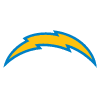
Round 1: Joe Alt, OT, Notre Dame (No. 5 overall)
Round 2: Ladd McConkey, WR, Georgia (34)
Round 3: Junior Colson, LB, Michigan (69)
Round 4: Justin Eboigbe, DL, Alabama (105)
Round 5: Tarheeb Still, DB, Maryland (137) | Cam Hart, DB, Notre Dame (140)
Round 6: Kimani Vidal, RB, Troy (181)
Round 7: Brenden Rice, WR, USC (225) | Cornelius Johnson, WR, Michigan (253)
SHOOK: It sure is nice to already have quarterback solved entering a draft. The Chargers were in the catbird’s seat in the first round, allowing three of the four teams in front of them to scramble to snag signal-callers while they were able to sit back and wait for Joe Alt to fall to them at fifth overall. The pick left just one question: With Rashawn Slater already on the roster, will Alt play on the left or right side? Regardless, he was the best tackle prospect and should give Justin Herbert two stellar bookend protectors for years to come. By the time the second round arrived, I was stunned Ladd McConkey was still available. He’s going to be an absolute stud at the NFL level and will team up with Herbert for many big plays. The choice of Junior Colson gives the Chargers a replacement for Kenneth Murray in a player with a solid foundation and room to elevate his play in the NFL. Justin Eboigbe provides quality depth along the defensive interior, and both Tarheeb Still and Cam Hart give the Chargers more options in the secondary. Call me crazy, but I loved the selection of an NFL Scouting Combine favorite of mine, Kimani Vidal, whose best years are ahead of him, in my opinion. Picking up two receivers in Brenden Rice and Cornelius Johnson made plenty of sense in the seventh round, given the Chargers’ offseason exodus at the position. We’ll see if they can contribute much in 2024.

Round 1: Marvin Harrison Jr., WR, Ohio State (No. 4 overall) | Darius Robinson, DL, Missouri (27)
Round 2: Max Melton, CB, Rutgers (43)
Round 3: Trey Benson, RB, Florida State (66) | Isaiah Adams, OL, Illinois (71) | Tip Reiman, TE, Illinois (82) | Elijah Jones, CB, Boston College (90)
Round 4: Dadrion Taylor-Demerson, S, Texas Tech (104)
Round 5: Xavier Thomas, OLB, Clemson (138) | Christian Jones, OT, Texas (162)
Round 6: Tejhaun Palmer, WR, UAB (191)
Round 7: Jaden Davis, CB, Miami (226)
FILICE: Last year, in his first draft at the helm, Monti Ossenfort established a reputation for wheeling and dealing even before making his first pick. Arizona’s GM traded down from No. 3 overall to No. 12 and then vaulted back up to No. 6, where he finally selected Ohio State OT Paris Johnson Jr. In the lead-up to this year’s draft, Ossenfort publicly pronounced the Cardinals were open for business once again at No. 4. However, he ultimately stayed put and went right back to the football factory in Columbus, Ohio, enlisting the services of Buckeyes wideout Marvin Harrison Jr. You don’t always have to take the road less traveled, especially when a massive need is sitting right there, staring you in the face. Harrison’s name evoked a smorgasbord of glossy adjectives over the past year, from elite to transcendent to generational, which inherently attracted some skepticism during the exercise in overthinking that is the pre-draft process. Here’s what I see: a big-bodied true “X” receiver with All-Pro upside. That’s a rare commodity any team would want, especially one with a soon-to-be 27-year-old quarterback heading into a huge season as his cap hit triples. Home-run pick — and I believe Ossenfort hit a bunch of singles and doubles in the remainder of the draft.
Making a whopping eight selections among the first 104 picks, Ossenfort was able to sprinkle the roster with instant-impact prospects. Scheme versatility is all the rage in modern defense, and over the three-day event in Detroit, Arizona snagged a trio of defenders offering that trait. First-round pick Darius Robinson is a “first off the bus” type as a physical specimen, and the 6-foot-5, 285-pounder’s ability to play all over the defensive line has earned him a best-case comp to Cam Jordan. Second-round corner Max Melton showcased inside/outside coverage ability as a four-year starter under Greg Schiano at Rutgers, then blew up the combine with an explosive workout. And Dadrion Taylor-Demerson, taken early in Round 4, has the range to play center field and the quick twitch to man the nickel. On the offensive side of the ball, the Cardinals added a home-run hitter to the backfield in Trey Benson, who’ll nicely complement veteran bruiser James Conner in the coming season.
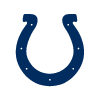
Round 1: Laiatu Latu, DE, UCLA (No. 15 overall)
Round 2: Adonai Mitchell, WR, Texas (52)
Round 3: Matt Goncalves, OT, Pitt (79)
Round 4: Tanor Bortolini, C, Wisconsin (117)
Round 5: Anthony Gould, WR, Oregon State (142) | Jaylon Carlies, LB, Missouri (151) | Jaylin Simpson, DB, Auburn (164)
Round 6: Marshall DB Micah Abraham, DB, Marshall (201)
Round 7: Oklahoma DT Jonah Laulu, DT, Oklahoma (234)
SHOOK: I was surprised to see Indianapolis end the defensive player drought at No. 15 when they chose Laiatu Latu, not because he wasn’t deserving of such a selection, but because I thought they might look elsewhere. Instead, the Colts took an edge rusher who was among the best in the class and will slide him into a group that suddenly looks more powerful than simply being known as DeForest Buckner and Friends. Colts GM Chris Ballard pushed back against reports of character concerns regarding Adonai Mitchell mere hours after selecting him, and honestly, I agree: Mitchell’s talent and potential was worth the supposed risk of choosing him in the middle of the second round. Plus, the Colts added a running mate for Michael Pittman Jr. for a second straight year, then doubled down by adding another in Anthony Gould — fully stocking up for Year 2 of the Anthony Richardson experience. I loved the choices of Matt Goncalves and Tanor Bortolini for a team that has needed reinforcements along the offensive line, especially with a couple of starters playing on expiring deals in 2024. I have high hopes for Bortolini, who impressed me at the NFL Scouting Combine and was a fantastic value pick in the fourth round — especially if Indianapolis needs to replace Ryan Kelly a year from now. In total, Ballard spent his nine picks as if he was grocery shopping for months, adding a large volume of supplies to a cabinet that didn’t need a ton of ready-made meals. I would’ve liked a backup running back for Jonathan Taylor, though. We’ll see how it pans out in the years ahead.
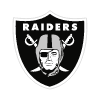
Round 1: Brock Bowers, TE, Georgia (No. 13 overall)
Round 2: Jackson Powers-Johnson, OG, Oregon (44)
Round 3: DJ Glaze, OT, Maryland (77)
Round 4: Decamerion Richardson, CB, Mississippi State (112)
Round 5: Tommy Eichenberg, LB, Ohio State (148)
Round 6: Dylan Laube, RB, New Hampshire (208)
Round 7: Trey Taylor, S, Air Force (223) | MJ Devonshire, CB, Pittsburgh (229)
SHOOK: Well, the Raiders didn’t land a quarterback. That’s what happens when all six of the top signal-callers are selected before Las Vegas’ turn on the clock. That was a missed opportunity to me, dropping their grade slightly, but when it comes to consolation prizes, Brock Bowers might be the best possible outcome. As arguably the best player in college football in 2023, Bowers would have been a top-six pick in most other draft classes, but because of the run on quarterbacks, he was still available at 13, giving the Raiders an immediate playmaker for whichever quarterback they roll with in 2024. Jackson Powers-Johnson was a projected first-round pick for much of the pre-draft process, so landing him in the second round was a good get. The addition of DJ Glaze was wise, too, because it gives head coach Antonio Pierce options at right tackle following the departure of Jermaine Eluemunor. GM Tom Telesco also addressed the Raiders’ need for supplemental help at corner, snagged a running back to compete with Ameer Abdullah for a roster spot, and even added a safety for good measure. Despite not getting a quarterback, this is a pretty darn good class.

Round 1: Malik Nabers, WR, LSU (No. 6 overall)
Round 2: Tyler Nubin, S, Minnesota (47)
Round 3: Andru Phillips, CB, Kentucky (70)
Round 4: Theo Johnson, TE, Penn State (107)
Round 5: Tyrone Tracy Jr., RB, Purdue (166)
Round 6: Darius Muasau, LB, UCLA (183)
FILICE: Entering the draft, one question loomed over all Giants discussion: Would they dive back into the quarterback pool? NFL Network Insider Ian Rapoport reported during first-round coverage that New York did indeed try to move up into New England’s No. 3 draft slot to take Drake Maye. But after the Patriots kept the North Carolina signal-caller for themselves, the Giants moved forward with a plan to continue building up the roster around Daniel Jones, efficiently addressing their biggest non-QB needs. This, of course, began with the selection of electric wideout Malik Nabers. New York hasn’t had a 1,000-yard receiver — shoot, no one’s even reached 800 yards in a season — since 2018, when Odell Beckham Jr. hit the mark in his final year with the franchise. So, it made plenty of sense to go back to the fruitful LSU receiver well for a prolific playmaker whose explosive game, frame and toughness garner comparisons to OBJ. Brian Daboll and Jones are going to have a lot of fun with this new toy, which adds a necessary jolt to the league’s 30th-ranked scoring offense.
On Day 2, Big Blue shifted from pass catcher to pass defense, filling a couple of big needs in the secondary. In the wake of Xavier McKinney’s departure in free agency, the G-Men scooped up Tyler Nubin, the top-rated safety according to all three of our resident prospect rankers (Daniel Jeremiah, Bucky Brooks and Eric Edholm). Meanwhile, following Adoree’ Jackson’s disappointing season, New York allowed the veteran cornerback’s contract to expire this offseason, leaving the Giants light at the position beyond promising 2023 first-rounder Deonte Banks. Insert Andru Phillips, a physical cover man with inside/outside versatility who became a buzzy name late in the pre-draft process.
With Darren Waller still considering retirement, GM Joe Schoen targeted an athletic freak at tight end early in Day 3: Theo Johnson, whose eye-popping combine numbers far exceeded his production at Penn State. A bet on traits, yes, but at an NFL position where traits often pay out. Lastly, I liked the fifth-round selection of running back Tyrone Tracy Jr., whose dynamic skill set could make him a nice complement to free-agent addition Devin Singletary in New York’s Saquon-less backfield. The former wide receiver just needs more refinement to his traditional RB game.

Round 1: Brian Thomas Jr., WR, LSU (No. 23 overall)
Round 2: Maason Smith, DT, LSU (48)
Round 3: Jarrian Jones, DB, Florida State (96)
Round 4: Javon Foster, OT, Missouri (114) | Jordan Jefferson, NT, LSU (116)
Round 5: Deantre Prince, DB, Mississippi (153) | Keilan Robinson, RB, Texas (167)
Round 6: Cam Little, K, Arkansas (212)
Round 7: Myles Cole, DE, Texas Tech (236)
SHOOK: The Jaguars nailed their first-round pick, drafting a replacement for the departed Calvin Ridley after trading down. It’s truly a luxury (and a bit of savvy positional navigation) to be able to snag your ideal fit in the starting lineup while also adding future picks. It’s also nice to bolster your defensive line after spending big money on trusted starter Josh Allen, which is exactly what GM Trent Baalke did with his selections of Maason Smith and Jordan Jefferson, his second and third LSU products taken in this draft. Jarrian Jones will fill a similar role in the secondary as a rotational depth defender, while Javon Foster can get his feet wet before potentially being asked to man a starting spot in the future. I’m interested to see if Keilan Robinson can push D’Ernest Johnson and Tank Bigsby for a roster spot this summer; if he cracks the final 53, that could prove to be a wisely spent fifth-round pick. Baalke also set up a fun kicker battle for training camp, pitting Cam Little against veteran Riley Patterson, who returned to Jacksonville this offseason after spending 2023 with both Cleveland and Detroit.

Round 1: Amarius Mims, OT, Georgia (No. 18 overall)
Round 2: Kris Jenkins, DT, Michigan (49)
Round 3: Jermaine Burton, WR, Alabama (80) | McKinnley Jackson, NT, Texas A&M (97)
Round 4: Erick All, TE, Iowa (115)
Round 5: Josh Newton, DB, TCU (149)
Round 6: Tanner McLachlan, TE, Arizona (194) | Cedric Johnson, DE, Mississippi (214)
Round 7: Daijahn Anthony (224), DB, Mississippi | Matt Lee, C, Miami (237)
SHOOK: Realistically, the Bengals carried just one clear need into the draft: receiver. They deserve credit for not forcing the issue, though, instead addressing a future — and arguably, more important — hole along the offensive line by selecting Mims, who serves two purposes. Cincinnati can afford him time to grow before asking Mims to handle full-time duties, and as the Bengals have learned too often in recent years, depth is essential along the offensive line. They got both by choosing Mims and waiting to select a receiver. In between, the Bengals added a quality defensive tackle in Jenkins, who will join a defensive front that will require a committee approach to replace D.J. Reader. Two for two. And as it pertains to receiver, the Bengals took a slot man in Burton, who should fit in perfectly as a complement to both Tee Higgins and Ja’Marr Chase. I expect Burton to pop up on the highlight reel as a frequent target on explosive plays, much like he did at Alabama. From there, the Bengals shifted their approach toward depth, spending a healthy serving of picks to add players with promise at tight end — fittingly, the tight end-friendly Bengals selected two at the position, including a low-risk addition of a Daniel Jeremiah favorite at the position in McLachlan — defensive tackle, edge rusher, corner, safety and naturally, center. While this class might lack splash picks, it’s a well-rounded group that should serve the Bengals well both in 2024 and beyond.

Round 1: Jared Verse, DE, Florida State (No. 19 overall)
Round 2: Braden Fiske, DT, Florida State (39)
Round 3: Blake Corum, RB, Michigan (83) | Kamren Kinchens, S, Miami (99)
Round 5: Brennan Jackson, DE, Washington State (154)
Round 6: Tyler Davis, DT, Clemson (196) | Joshua Karty, K, Stanford (209) | Jordan Whittington, WR, Texas (213) | Beaux Limmer, IOL, Arkansas (217)
Round 7: KT Leveston, OL, Kansas State (254)
FILICE: Don’t let the luxurious Hermosa Beach draft house fool you: The Rams aren’t getting soft this offseason — in fact, they’re loading up on maulers in the trenches. In free agency, Los Angeles reinforced the offensive line by shelling out nearly $100 million to sign left guard Jonah Jackson and re-sign right guard Kevin Dotson. Then, with the team’s first two selections of the draft — including its first Round 1 pick since Barack Obama’s presidency — L.A. snatched up a pair of rugged, high-motor defensive linemen from Florida State in DE Jared Verse and DT Braden Fiske. Think Les Snead enjoyed watching this past season’s Seminole defense? Moving up 13 slots for Fiske was costly (L.A. gave up a 2025 second-rounder in the swap with Carolina), but with defensive tackles flying off the board early on Day 2, Snead clearly felt the need to go get his guy. And hey, that bold maneuver gave us this incredible scene from the beach house, with Verse hopping on the Rams’ draft call to Fiske for an emotional moment with his old/new teammate. Real men cry! There’s no replacing Aaron Donald, to be sure, but with Verse and Fiske joining last year’s rookie duo of Kobie Turner and Byron Young, Los Angeles should field one of the most disruptive young fronts in football.
Beyond those two premium picks, the Rams filled additional depth needs with quality players, three of whom I’d like to spotlight. Despite leading the country with a whopping 27 rushing touchdowns during Michigan’s national championship run this past season, Blake Corum still didn’t look entirely back from the knee injury that prematurely ended his junior campaign. If he regains FULL JUICE to go along with his stellar vision and contact balance, Corum gives Los Angeles a fine backfield complement to last year’s breakout star, Kyren Williams. Safety Kamren Kitchens had a bunch of fans on Draft Twitter … until the NFL Scouting Combine. The 4.65-second 40-yard dash and inexplosive jumps kind of derailed that bandwagon. But he’s an instinctive ballhawk (SEE: 11 picks over the past two seasons) whose play speed comfortably exceeds his timed speed. Lastly, sixth-round pick Beaux Limmer just feels like one of those overlooked interior offensive linemen who significantly outperforms his draft slot. With 41 starts in the SEC, the man is battle-tested.
The biggest thing keeping L.A. out of the ‘A’ range? Cornerback felt like a position of need, but the Rams never pulled the trigger.

Round 1: Xavier Worthy, WR, Texas (No. 28 overall)
Round 2: Kingsley Suamataia, OT, BYU (63)
Round 4: Jared Wiley, TE, TCU (131) | Washington State DB Jaden Hicks (133)
Round 5: Hunter Nourzad, OL, Penn State (159)
Round 6: Kamal Hadden, DB, Tennessee (211)
Round 7: C.J. Hanson, OL, Holy Cross (248)
SHOOK: A decent amount of this grade is built on Kansas City’s trade at the back end of the first round. The Chiefs managed to convince Buffalo(!) to trade with them, which allowed them to go after Xavier Worthy, a speedster who broke the 40-yard dash record at the NFL Scouting Combine and gives Kansas City the legitimate deep threat it has lacked since Tyreek Hill was traded to Miami. There’s no guarantee Worthy will be good at the next level, but the mere fact the Chiefs addressed their greatest need with aggression is commendable. Kingsley Suamataia is a mountain of an offensive lineman who certainly isn’t guaranteed to receive a starting job but should challenge Wanya Morris at left tackle. It was nice to see GM Brett Veach go back to the well to address a few positions, of both immediate and future need, selecting Jared Wiley to provide some competitive depth at tight end and then adding two defensive backs to bolster a group that lost L’Jarius Sneed in the offseason. This is how the Chiefs do it, letting a select few walk and replacing them via the draft. After losing Nick Allegretti to free agency, Veach also earns positive marks from me for spending three picks on offensive linemen, with a personal favorite of mine, Holy Cross’ C.J. Hanson, landing with the defending champs in the seventh round. I think that kid can play, and if the Chiefs find themselves needing a replacement (like they did when Joe Thuney couldn’t play in Super Bowl LVIII), I’d love to see Hanson get the chance to prove himself.

Round 1: Drake Maye, QB, North Carolina (No. 3 overall)
Round 2: Ja’Lynn Polk, WR, Washington (37)
Round 3: Caedan Wallace, OT, Penn State (68)
Round 4: Layden Robinson, OG, Texas A&M (103) | Javon Baker, WR, UCF (110)
Round 6: Marcellas Dial, DB, South Carolina (180) | Joe Milton III, QB, Tennessee (193)
Round 7: Jaheim Bell, TE, Florida State (231)
SHOOK: It’s a new era in New England, and the face of it will be Drake Maye, a quarterback the Patriots were so convinced was their man, they rebuffed trade offers for the No. 3 pick. This class will ultimately be judged on Maye’s performance, which will also be tied to the play of the second player the Patriots chose, Ja’Lynn Polk. It’s taking me some time to shake the old notion of what a Patriots player is — Ladd McConkey felt like a good fit for the previous regime under Bill Belichick — now that Jerod Mayo and Eliot Wolf are running the show, but this draft will help, I think. I loved their decision to double down at receiver by taking Javon Baker in an attempt to finally remake the NFL’s thinnest receiving corps. Their investment in two linemen should give New England one instant starter (Caedan Wallace) and a guard (Layden Robinson) to develop. Selecting Joe Milton III wasn’t a bad decision, either, because he’ll get time to develop, and you just cannot teach the arm strength he possesses.

Round 1: Byron Murphy II, DT, Texas (No. 16 overall)
Round 3: Christian Haynes, OG, Connecticut (81)
Round 4: Tyrice Knight, LB, UTEP (118) | AJ Barner, TE, Michigan (121)
Round 5: Nehemiah Pritchett, CB, Auburn (136)
Round 6: Sataoa Laumea, OT, Utah (179) | DJ James, CB, Auburn (192) | Michael Jerrell, OT, Findlay (207)
FILICE: Without Pete Carroll in the war room for the first time in almost 15 years, this was always going to be an interesting draft for the Seahawks. How would John Schneider, originally hired as GM one week after Carroll arrived in Seattle back in 2010, work with new head coach Mike Macdonald? Well, if the first pick is any indication, swimmingly. Byron Murphy II is the perfect tone-setter for the inaugural draft of the Macdonald era, as a compact 3-tech disruptor who wins with quickness, strength and leverage. Macdonald just had one of those in Justin Madubuike, and he helped make the Baltimore defensive tackle a very rich man. Pre-draft buzz had Murphy potentially going in the top 10, so ‘Hawks brass had to be thrilled when an unprecedented run on offensive players pushed the top DT right into Seattle’s lap.
After that slam-dunk selection to fill a need in style on Thursday night, Seattle had to wait 65 picks before coming back on the clock late Friday evening. Yet, the Seahawks still were able to fill another need with offensive guard Christian Haynes. A model of dependability, Haynes has been in UConn’s starting lineup for the team’s past 49 games, earning third-team All-American honors in each of the last two seasons — no small feat, considering the Huskies went just 9-16 in that span. UConn coach Jim Mora, who actually preceded Carroll as head coach of the Seahawks, gushes about his former team captain’s character.
On Saturday, Seattle continued to address soft spots on the roster, starting with the linebacker position, which lost both Bobby Wagner and Jordyn Brooks in free agency. Now, the Seahawks took Tyrice Knight higher than many draftniks expected the ‘backer to go, but he just led the FBS with 84 solo tackles this past season. Not to mention, my esteemed colleague Charles Davis “pounded the table” for him. Meanwhile, after premium blocking TE Will Dissly signed with Jim Harbaugh’s Chargers in free agency, Seattle scooped up A.J. Barner, the tight end who was a mauling blocker for Harbaugh’s previous team in Ann Arbor. And lastly, I appreciate how Seattle cornered the market on Auburn cornerbacks, taking Nehemiah Pritchett and DJ James in back-to-back rounds. James, in particular, feels like a potential steal at No. 192.

Round 1: Olumuyiwa Fashanu, OT, Penn State (No. 11 overall)
Round 3: Malachi Corley, WR, Western Kentucky (65)
Round 4: Braelon Allen, RB, Wisconsin (134)
Round 5: Jordan Travis, QB, Florida State (171) | Isaiah Davis, RB, South Dakota State (173) | Qwan’tez Stiggers, CB (176)
Round 7: Jaylen Key, DB, Alabama (257)
SHOOK: I give Jets GM Joe Douglas two gold stars for, first, admitting failure on Mekhi Becton and then drafting a long-term cornerstone replacement in Olumuyiwa Fashanu, who — judging by Tyron Smith’s well-documented injury history — will see the field at some point in 2024. I’m also very much on board with Douglas’ vision in choosing Malachi Corley, giving the Jets a player in the Deebo Samuel mold. He should complement Garrett Wilson and Mike Williams quite well. Braelon Allen is an absolute tank of a running back and another perfect complement to Breece Hall, and while I’m not sure he’ll see a ton of touches in 2024, his change of pace will make the Jets an intriguing watch on every single running down.
Douglas’ choice of Jordan Travis is surprisingly anticipatory while not being too risky. After learning a hard lesson about the importance of backup quarterbacks in 2024, Douglas has supplied his roster with a capable veteran (Tyrod Taylor) and a developmental prospect in Travis, who will be afforded time to complete his recovery from the left leg injury that ended his career at Florida State. Perhaps he develops into their long-term solution following the conclusion of the Aaron Rodgers experiment. From there, Douglas drafted with plenty of aspiration, taking Canadian Football League standout Qwan’tez Stiggers and adding him to a secondary that doesn’t need him to contribute on a per-play basis, which is truly the ideal situation for a player with his unorthodox background. The only glaring issue with this class was the lack of a tight end, but Douglas still has time to address that area in free agency, if he so chooses.
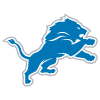
Round 1: Terrion Arnold, CB, Alabama (No. 24 overall)
Round 2: Ennis Rakestraw Jr., CB, Missouri (61)
Round 4: Giovanni Manu, OT, University of British Columbia (126) | Sione Vaki, RB, Utah (132)
Round 6: Mekhi Wingo, DT, LSU (189) | Christian Mahogany, OG, Boston College (210)
FILICE: Brad Holmes and Dan Campbell have a type, and their first two picks of this draft were straight out of central casting. Anyone who has come across Terrion Arnold knows he is one of this draft’s biggest energy-givers, the kind of gregarious presence every locker room needs during the grind of a season. As NFL Network draft analyst Daniel Jeremiah said after the Lions pounced on the cornerback via trade-up, “There’s guys that like football, there’s guys that love football, and then there’s Terrion Arnold.” Yup. You saw his exhilarating, draft-night introduction to the city of Detroit, right? But the former five-star safety recruit isn’t just a fun personality — he’s a well-rounded defensive back offering just about everything you want at the position: size, physicality, ball skills, football IQ and irrational confidence. A 4.50-second 40-yard dash at the combine raised some questions about his long speed, but the play speed never appeared to be an issue at Alabama. And most notably with this particular Lions regime, Arnold plays with an undeniable edge. Just like Detroit’s second-round pick, Ennis Rakestraw Jr., who summed up his feisty game in a post-selection video chat with reporters: “I call myself the tone-setter. Our defense used to call me the firecracker of the team because, yeah, I’m a corner, but I’ll come up and set that edge and hit you like a linebacker, and I like my presence to be felt when I’m out there.” The Lions had a need at cornerback this offseason — a need that only became more pressing after the release of Cameron Sutton. And in the draft, they found great value on a pair of alpha dogs who’ll fit in perfectly with the team’s gritty culture.
Now, in the middle rounds of the draft, it seemed like Holmes was feeling himself a little bit. And who can blame him? Over his first three drafts in Detroit, the GM uncovered a bevy of gems in Round 3 or beyond, including Amon-Ra St. Brown, Alim McNeill, Kerby Joseph, Ifeatu Melifonwu and Derrick Barnes. But Holmes was flexing in this year’s fourth round, selecting a Paul Bunyan-esque figure from the University of British Columbia (6-foot-7, 352-pound developmental tackle Giovanni Manu) and a two-way FOOTBALL PLAYER (RB/DB Sione Vaki). Both picks will probably hit and make me regret lampooning the logic. And to Holmes’ credit, he landed a couple nice value picks for trench depth in Round 6 (DT Mekhi Wingo and OG Christian Mahogany).

Round 1: Nate Wiggins, DB, Clemson (No. 30 overall)
Round 2: Roger Rosengarten, OT, Washington (62)
Round 3: Adisa Isaac, LB, Penn State (93)
Round 4: Devontez Walker, WR, North Carolina (113) | T.J. Tampa, DB, Iowa State (130)
Round 5: Rasheen Ali, RB, Marshall (165)
Round 6: Devin Leary, QB, Kentucky (218)
Round 7: Nick Samac, C, Michigan State (228) | Sanoussi Kane, DB, Purdue (250)
SHOOK: The Ravens needed a starting right tackle and a starting cornerback opposite Marlon Humphrey. They found both, at least on paper. Rosengarten should slot in on the right side and do a decent or better job from the start, and Wiggins has the speed to run with anyone, even if his thin frame means he might lose the physical battle. Wiggins left Clemson as arguably the best corner in the class because of his speed and blend of talent and traits, and even after he slid a bit in the first round, he’s a great get for a Ravens defense that knows it needs more production out of a corner not named Humphrey. Isaac fits into the Ravens’ traditional mold of taking a chance on a player with raw talent and maximizing it while he’s under a rookie deal (and inevitably signs his second deal elsewhere). He should rotate in with Kyle Van Noy to make for a constant edge-rushing threat opposite Odafe Oweh. I love the Walker selection, as the Ravens bought relatively low on a receiver who would’ve been on more radars had the NCAA not gotten in the way of his ability to participate in his first and only season at North Carolina. GM Eric DeCosta didn’t surprise many by adding a couple of defensive backs on Day 3, and after seeing two running backs leave in the offseason, the pickup of Ali adds another competitor to the depth chart. Leary, meanwhile, fits the traditional role of a developmental arm slotted behind an entrenched starter (Lamar Jackson) and veteran backup (Josh Johnson), a la the 1990s Green Bay Packers. Overall, it was a solid draft headlined by a couple of picks who will be expected to produce immediately, and included some sneaky depth that could prove important in the fall.

Round 2: Kamari Lassiter, DB, Georgia (No. 42 overall) | Blake Fisher, OT, Notre Dame (59)
Round 3: Calen Bullock, DB, USC (78)
Round 4: Cade Stover, TE, Ohio State (123)
Round 6: Jamal Hill, LB, Oregon (188) | Jawhar Jordan, RB, Louisville (205)
Round 7: Solomon Byrd, DE, USC (238) | Marcus Harris, DT, Auburn (247) | LaDarius Henderson, OG, Michigan (249)
SHOOK: Trading out of the first round might seem like a downgrade, but it wasn’t for the Texans, who added a future second-round pick in their deal with Minnesota before drafting Kamari Lassiter to bolster their secondary. Blake Fisher could fit in opposite Laremy Tunsil — time will tell, but on paper, it makes sense — but the real gem of this class to me is Cade Stover. He was likely drafted in the appropriate range, and he should hit the ground running with his former Ohio State teammate, 2023 Offensive Rookie of the Year C.J. Stroud, as part of an offense featuring two very capable tight ends. Calen Bullock will likely see time as a rotational defensive back, while the sixth- and seventh-round picks will be expected to battle for roster spots. The Texans have transformed themselves into legitimate contenders quickly, so much that they could afford to trade away a first-round pick.
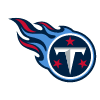
Round 1: Alabama OT JC Latham (No. 7 overall)
Round 2: Texas DT T’Vondre Sweat (38)
Round 4: North Carolina LB Cedric Gray (106)
Round 5: Louisville DB Jarvis Brownlee Jr. (146)
Round 6: Tulane WR Jha’Quan Jackson (182)
Round 7: Miami LB James Williams (242) | Michigan LB Jaylen Harrell (252)
SHOOK: Tennessee needed a left tackle and didn’t run from that reality, spending its top selection on JC Latham to fill out a group that has welcomed two linemen as first-round picks in consecutive years. The focus on the trenches didn’t end there, either, with GM Ran Carthon adding the beefy T’Vondre Sweat to plug gaps alongside Jeffery Simmons. Cedric Gray should compete (and possibly win) a job in Tennessee’s revamped linebacking corps, which already welcomed a new addition in Kenneth Murray. Carthon failed to add a tight end but did choose Jha’Quan Jackson, who is a long-term play at the receiver position, at least for now, and could offer immediate contributions as a returner. I’m excited to see if Jarvis Brownlee Jr. can fight his way onto the field early in 2024, which would strengthen a secondary that should be better following the acquisition of L’Jarius Sneed.

Round 2: Michael Hall Jr., DT, Ohio State (No. 54 overall)
Round 3: Zak Zinter, OG, Michigan (85)
Round 5: Jamari Thrash, WR, Louisville (156)
Round 6: Nathaniel Watson, LB, Mississippi State (206)
Round 7: Myles Harden, DB, South Dakota (227) | Jowon Briggs, DT, Cincinnati (243)
SHOOK: As the last team to make their first selection in the 2024 draft, the Browns did surprisingly well in a fashion similar to their in-state rivals. Their picks won’t register on the Richter Scale but filled some depth needs, adding a promising talent in Thrash (and answering fans’ cries for a new toy) to slot in behind Amari Cooper, Elijah Moore and Jerry Jeudy, while also snagging a future starter at guard in Zinter, who will be given the chance to learn behind Cleveland’s fantastic tandem of Joel Bitonio and Wyatt Teller until Bitonio decides to call it a career. On the defensive side, the Browns plugged holes along the defensive interior with veterans in free agency and will enter 2024 following the same plan while hoping Hall becomes a long-term starter whose potential — which served more as a tease than a guarantee at Ohio State — was just a sign of future production. From there, Cleveland focused on depth with its remaining three picks, choosing the athletic Watson to slide in behind Jeremiah Owusu-Koramoah and bolstering the secondary and defensive line with Harden and Briggs. GM Andrew Berry didn’t have any gaping holes to address in this draft — a luxury — and acted accordingly, even with a lack of draft capital.

Round 1: Jayden Daniels, QB, LSU (No. 2 overall)
Round 2: Jer’Zhan Newton, DT, Illinois (36) | Mike Sainristil, CB, Michigan (50) | Ben Sinnott, TE, Kansas State (53)
Round 3: Brandon Coleman, OG, TCU (67) | Luke McCaffrey, WR, Rice (100)
Round 5: Jordan Magee, LB, Temple (139) | Dominique Hampton, S, Washington (161)
Round 7: Javontae Jean-Baptiste, DE, Notre Dame (222)
FILICE: From the conclusion of the 2023 draft to the start of the 2024 event, Caleb Williams essentially went wire-to-wire as the no-brainer No. 1 pick. This draft really began at No. 2, with Washington seemingly choosing between quarterbacks Jayden Daniels and Drake Maye. Personally, I ride with colleagues Daniel Jeremiah and Eric Edholm in ranking Maye ahead of Daniels. Clearly, Adam Peters and Co. felt differently — and that’s OK! I’m not here to disparage the reigning Heisman Trophy winner, who enters the NFL with the kind of dual-threat ability that gives defensive coordinators cold sweats. But I’m already getting cold sweats myself thinking about Daniels’ protection — or lack thereof — in DC. Anyone who watched Jayden’s magical season at LSU is well aware of a disconcerting aspect of his game: He plays with the kind of reckless abandon that belies his rail-thin frame. The man took a frightening amount of gigantic hits. Now, to be clear, Daniels must learn to protect himself better, first and foremost. But I would not have minded if the Commanders had made a more concerted effort to surround him with a fortress. Instead, they waited until their fifth pick to add an offensive lineman — Brandon Coleman, who’s viewed as a guard by some and a tackle by others — and then didn’t address the wanting position group again. I don’t love this, especially considering what happened to the last dual-threat dynamo Washington took at No. 2 overall.
On the plus side, Peters gave his defensive-minded head coach, Dan Quinn, two highly enticing pieces to deploy. Jer’Zhan Newton would’ve been long gone by pick No. 36 had a Jones fracture in his foot not significantly abbreviated his pre-draft process. And that’s why I don’t entirely mind Washington adding another defensive tackle to a group that already includes two players making serious loot (Jonathan Allen and Daron Payne): The value was just too good to pass up. And then there’s Mike Sainristil. I contend that no other prospect in this draft cycle was as universally adored as the Michigan nickelback. To wit, Nick Saban absolutely gushed over Sainristil on the ABC broadcast: “I LOVE — there’s a difference between love and LOVE — I LOVE this guy. This guy may be the best football player, pound for pound, in the draft.” HIGH praise, especially considering Sainristil’s Wolverines handed Saban a loss in the iconic coach’s final game at Alabama.

Round 1: Chop Robinson, OLB, Penn State (No. 21 overall)
Round 2: Patrick Paul, OT, Houston (55)
Round 4: Jaylen Wright, RB, Tennessee (120)
Round 5: Mohamed Kamara, OLB, Colorado State (158)
Round 6: Malik Washington, WR, Virginia (184) | Patrick McMorris, S, Cal (198)
Round 7: Tahj Washington, WR, USC (241)
SHOOK: I’m a bit bummed the Dolphins didn’t add to the defensive interior in the draft after losing Christian Wilkins in free agency. They did address what could be a significant need at the start of the season by selecting Chop Robinson, giving Miami another starting option on the edge with Bradley Chubb and Jaelan Phillips recovering from injury. Miami also did a good job of planning both for the short- and long-term future when selecting Patrick Paul, giving them another player to turn to in the event Terron Armstead, who considered retirement this offseason, adds another item to his lengthy injury history. Jaylen Wright could be a sneaky good pick in the long run, even if he doesn’t see a ton of time in a backfield that also features veteran Raheem Mostert and the explosive De’Von Achane. From there, the Dolphins continued to add depth to the roster with their picks. I’m interested to see which of the two receivers they selected lands higher on the depth chart, but I also know Miami’s top three at the position are solidified.

Round 1: Jordan Morgan, OT, Arizona (No. 25 overall)
Round 2: Edgerrin Cooper, LB, Texas A&M (45) | Javon Bullard, DB, Georgia (58)
Round 3: MarShawn Lloyd, RB, USC (88) | Ty’Ron Hopper, LB, Missouri (91)
Round 4: Evan Williams, S, Oregon (111)
Round 5: Jacob Monk, C, Duke (163) | Kitan Oladapo, S, Oregon State (169)
Round 6: Travis Glover, OT, Georgia State (202)
Round 7: Michael Pratt, QB, Tulane (245) | Kalen King, CB, Penn State (255)
FILICE: Throughout the pre-draft process, one of the most common pairings in the mock milieu was Graham Barton going to Green Bay. So, naturally, when the Packers came on the clock at No. 25 and the versatile offensive lineman was still available, I mentally sent Barton to Titletown. But no! Green Bay opted for Jordan Morgan, the Arizona left tackle some project as more of an NFL guard. Where does Brian Gutekunst anticipate his new blocker to line up? In his presser after Round 1, the Packers GM said Morgan’s a “versatile offensive lineman like we like, really athletic, we really kind of feel he could probably play four positions for us.” Yep, sounds like a Packers OL. No team develops offensive linemen better than Green Bay these days, and this approach of just drafting for the general position group and figuring out the “best five” later has proven sage with previous picks like Elgton Jenkins and Zach Tom.
In the second round, Gutey sprinkled some versatility on the back two levels of a defense that’s transitioning to new coordinator Jeff Hafley. Edgerrin Cooper, who was the first off-ball linebacker off the board, is a long, explosive, sideline-to-sideline playmaker. Lining him up next to Quay Walker gives Green Bay a tantalizingly athletic LB duo. Javon Bullard showed off his variable skill set as a plus starter in each of the past two years on Kirby Smart’s defense, which demands a lot of its defensive backs, physically and mentally. Primarily a free safety for Georgia in 2023, Bullard could line up deep, next to blockbuster free-agent addition Xavier McKinney. Or he could man the nickel, where his physicality and blitzing ability were on full display during the Bulldogs’ 2022 national title campaign.
In an underwhelming RB class, third-round pick MarShawn Lloyd had a fair amount of fans — including NFL Network draft analyst Daniel Jeremiah, who had the bursty back as his top-rated player at the position. He could provide the lightning to complement a double dose of thunder from Josh Jacobs and AJ Dillon.

Round 1: Bo Nix, QB, Oregon (No. 12 overall)
Round 3: Jonah Elliss, OLB, Utah (76)
Round 4: Troy Franklin, WR, Oregon (102)
Round 5: Kris Abrams-Draine, CB, Missouri (145) | Audric Estimé, RB, Notre Dame (147)
Round 7: Devaughn Vele, WR, Utah (235) | Nick Gargiulo, OG, South Carolina (256)
SHOOK: Bo Nix’s selection at 12th overall was indeed surprising, but when you peel back the layers of pre-draft projections and supposed value, it makes sense. Sean Payton loves Nix, seeing him as his quarterback of the future, and GM George Paton acted accordingly in selecting him. I’m on board; Nix is very experienced and fully equipped between the ears to get the job done, which is often more than half the battle in the NFL. We’ll see if it works out. Adding Troy Franklin was a wise move following the departure of Jerry Jeudy, giving Nix a familiar face to work with and a field-stretcher the Broncos could use opposite Courtland Sutton. Jonah Elliss should give Denver some much-needed rotational depth along the edge, while Audric Estime is a hulking power back who can fill such a role behind Javonte Williams and Samaje Perine. The remaining selections, typical of late Day 3 picks, are about competitive depth. We’ll see if Devaughn Vele can work his way into a rotational job in a receiving corps that could use some fresh talent in the two-deep.

Round 1: Taliese Fuaga, OT, Oregon State (No. 14 overall)
Round 2: Kool-Aid McKinstry, CB, Alabama (41)
Round 5: Spencer Rattler, QB, South Carolina (150) | Bub Means, WR, Pittsburgh (170) | Jaylan Ford, LB, Texas (175)
Round 6: Khristian Boyd, DT, Northern Iowa (199)
Round 7: Josiah Ezirim, OT, Eastern Kentucky (239)
FILICE: When New Orleans spent its first-round pick on a powerful offensive tackle with a nasty demeanor, I have to imagine more than a few Saints fans immediately broke into a cold sweat. But not to fret, y’all! Taliese Fuaga is a very different prospect than Trevor Penning, the 2022 first-round pick who has struggled mightily in his first two pro seasons. First of all, this Oregon State product started 25 games over the past two seasons in the Pac-12, earning all-conference honors in each, so his passage into the NFL won’t be nearly as daunting as Penning’s drastic transition from FCS program Northern Iowa. Secondly, Fuaga already has a reputation as a technician with great balance, whereas Penning was viewed as more of a raw prospect with upside. Not to mention, Fuaga has the kind of skill set that could work quite well at the guard position, which might be key if Penning ever lives up to his draft pedigree and/or Ryan Ramczyk’s body stops failing him. Long story short: Fuaga was a rock-solid pick — just like New Orleans’ second-round selection. There are traitsier cornerbacks in this draft class, but Kool-Aid McKinstry offers the most complete résumé, combining pedigree with high-level experience and an extremely well-rounded game. No wonder Mickey Loomis jumped up a few spots when the CB remained on the board after the draft’s first 40 picks. A five-star recruit out of high school, McKinstry was a starter in each of his three seasons under noted DB guru Nick Saban. While his long speed could be a bit lacking, he’s a smart, smooth, scheme-versatile cover man. McKinstry’s selection fed into the simmering trade rumors around Marshon Lattimore, but the new guy might actually be an eventual replacement for New Orleans’ other corner. Fresh off a breakout campaign, Paulson Adebo is now in a contract year. Another boffo season could price him out of NOLA. (Unless, of course, the cap isn’t real — amirite, Saints fans??)
After those two strong selections, New Orleans had to wait more than 100 picks before coming on the clock again. So, unsurprisingly, the rest of the draft class doesn’t exactly jump off the page. That said, Spencer Rattler is a talented thrower who could provide some good sports talk radio fodder — alongside last year’s fourth-round quarterback, Jake Haener — should Derek Carr struggle to meet his $150 million expectations. And Khristian Boyd — who ironically comes from Penning’s old stomping grounds at Northern Iowa — could provide nice early returns as a rotational player on the nose.

Round 1: Ricky Pearsall, WR, Florida (No. 31 overall)
Round 2: Renardo Green, CB, Florida State (64)
Round 3: Dominick Puni, OG, Kansas (86)
Round 4: Malik Mustapha, S, Wake Forest (124) | Isaac Guerendo, RB, Louisville (129) | Jacob Cowing, WR, Arizona (135)
Round 6: Jarrett Kingston, OT, USC (215)
Round 7: Tatum Bethune, LB, Florida State (251)
FILICE: The first-round selection of Ricky Pearsall took many by surprise, but not this keyboard jockey! I had the Florida wideout coming off the board in Round 1 in my final mock. (Yes, that projection had him going to the Chiefs, not the 49ers, but don’t let such details get in the way of MY moment, dammit!) The sure-handed Pearsall made the catch of the year in college football and then crushed the pre-draft process with a route-running clinic at the Senior Bowl and explosive testing at the combine. Kyle Shanahan’s going to get a lot out of this smooth mover the kids call “Slick Rick.” But of course, his selection in Round 1 fed into rumors that Brandon Aiyuk and/or Deebo Samuel could be on the move. Aiyuk, for his part, immediately shared his approval of the selection with Shanahan and GM John Lynch, apparently texting the brain trust on Thursday night, “Fire pick. Can’t lie.” One night later, Lynch said the 49ers didn’t entertain any trades for Aiyuk or Samuel during Day 2 of the draft: “We’re happy with our wide receiver group. Actually, more than happy. We’re really thrilled with it.” Pearsall can indeed co-exist with the two veteran stars in 2024, given his inside/outside ability and bountiful route tree. And in San Francisco’s overtime loss to Kansas City in the Super Bowl, the Niners sure looked like a team that could use another separator out wide.
San Francisco’s Day 2 activity earned mixed reactions. Renardo Green didn’t make NFL Network draft guru Daniel Jeremiah’s Top 150 Big Board, but the 49ers took him at No. 64 overall. ESPN’s Mel Kiper Jr., the godfather of draft analysis, called it “the biggest reach of Round 2, by far.” Green’s fans, including my colleague Lance Zierlein, point to his boffo press-man effort against the electric Malik Nabers in Florida State’s season-opening blowout of LSU last September. In Round 3, the 49ers wisely tossed more resources at the offensive line. Taken at No. 86 overall, versatile blocker Dominick Puni was the No. 66 overall prospect on DJ’s Big Board. Value pick!
One selection that caught nobody by surprise: Lynch and Shanahan taking a mid-round running back. It’s become canon. Admittedly, Isaac Guerendo is intriguing, as he should have plenty of tread left on the tires (just 231 college carries) — and those tires go FAST (4.33-second 40-yard dash at a robust 221 pounds).
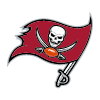
Round 1: Graham Barton, C, Duke (No. 26 overall)
Round 2: Chris Braswell, OLB, Alabama (57)
Round 3: Tykee Smith, S, Georgia (89) | Jalen McMillan, WR, Washington (92)
Round 4: Bucky Irving, RB, Oregon (125)
Round 6: Elijah Klein, OG, Texas-El Paso (220)
Round 7: Devin Culp, TE, Washington (246)
FILICE: Jason Licht placed a substantial bet on 2022 fifth-round pick Zyon McCollum by trading Carlton Davis III to Detroit in March. Then the Tampa Bay GM doubled down by avoiding the position altogether in the draft. Bold strategy, Jason — we’ll see if it pays off. But enough about the picks the Buccaneers didn’t make — how about the cards they actually turned in?
The first-round selection of Graham Barton could have been sponsored by OSHA, seeing how universally it was lauded for safeness. Truthfully, the Duke left tackle does appear to have a versatile skill set that could fit in any environment. In Tampa, he’ll probably man the pivot, where he played as a true freshman in Durham. Unfortunately, he can’t simultaneously play left guard, which remains a soft spot on the depth chart. But that high-floor pick kind of set the tone for the rest of the draft, as the Bucs continually hit singles with exceedingly solid picks. Stuck behind a murderers’ row of pass rushers during his first three years at Alabama, Chris Braswell finally got his opportunity this past fall and took full advantage, leading the SEC with 56 pressures, per PFF. After turning heads at the Senior Bowl, Braswell enjoyed a nice workout at the NFL Scouting Combine. There could be some untapped potential here. In Round 3, Licht appeared to target the slot, offensively and defensively. Jalen McMillan struggled with injuries this past season, but in 2022, he actually led Washington in receptions and receiving touchdowns — yes, over Rome Odunze. Tykee Smith’s a versatile safety/nickel who’s much more physical force defender than sticky cover man, but he could see significant snaps Year 1 in the slot.
One more pick I’d like to spotlight, as it underscores the radically decent feel of this draft haul: fourth-rounder Bucky Irving. The Oregon running back was a consistent vessel for “FORGET THE TESTING!” pleas from impassioned draftniks over the past couple months, and for good reason. On film, he’s a compact, shifty, generally fun mighty mite of a ball-carrier. But a slow 40 time and inexplosive jumps in Indy sunk his draft stock.

Round 1: J.J. McCarthy, QB, Michigan (No. 10 overall) | Dallas Turner, OLB, Alabama (17)
Round 4: Khyree Jackson, CB, Oregon (108)
Round 6: Walter Rouse, OT, Oklahoma (177) | Will Reichard, K, Alabama (203)
Round 7: Michael Jurgens, C, Wake Forest (230) | Levi Drake Rodriguez, DT, Texas A&M-Commerce (232)
FILICE: The J.J. McCarthy debate felt like the most impassioned discourse of this entire draft cycle. Essentially, there were two camps …
J.J. skeptics: He never had to carry the team and “QB WINS” is asinine.
J.J. supporters: He excelled in high-leverage situations and winning is the point of the game.
Frankly, I think both sides were right. There will be no hot take here — apologies to the culture. Anyone who watched Jim Harbaugh’s Wolverines over the last two years knows it was a run-first operation, with McCarthy throwing for a total of just 857 yards and four touchdowns over the final six games of Michigan’s national championship run this past season. On the other hand, the highly pedigreed passer flourished in big spots, routinely making the plays that needed to be made when the Wolverines needed them most. In terms of the wins? Additional context undoubtedly matters in this TEAM sport, but I also think it’s shortsighted to completely dismiss a 27-1 college record with the lone loss being a 51-45 defeat in the national semifinal.
So, where does that leave me when it comes to projecting how J.J. will fare in the NFL? In the dark. I. Don’t. Know. And that’s a scary place to be when assessing the merits of a top-10 selection. Add me to the chorus of voices saying Minnesota was the best possible landing spot for McCarthy. Kevin O’Connell has forgotten more about quarterbacking than I’ll ever know. But it’s impossible to ignore the risk associated with this premium pick. Granted, the Vikings snagged another first-rounder who was widely viewed as a steal in his draft slot — trading up for OLB Dallas Turner at No. 17 — but they sacrificed valuable draft assets in order to make that move. Which leads us to the additional rub of the Vikings’ high-stakes gamble in this year’s draft: They nuked next year’s draft currency. At the moment, Minnesota holds a grand total of three picks in the 2025 draft: one in the first round and two in the fifth.
I hope all of that provided some clarity on my thinking behind the grade above. It’s not that I know the Vikes reached on McCarthy — it’s that they pushed all their chips into the center of the table, and I have no real idea which cards they’re holding. That uncertainty makes me anxious.

Round 2: Keon Coleman, WR, Florida State (No. 33 overall) | Utah DB Cole Bishop, S, Utah (60)
Round 3: DeWayne Carter, DT, Duke (95)
Round 4: Ray Davis, RB, Kentucky (128)
Round 5: Sedrick Van Pran-Granger, IOL, Georgia (141) | Edefuan Ulofoshio, LB, Washington (160) | Javon Solomon, DE, Troy (168)
Round 6: Tylan Grable, OT, UCF (204) | Penn State DB Daequan Hardy, CB, Penn State (219)
Round 7: Travis Clayton, OT (221)
SHOOK: I cannot wrap my head around the Bills’ decision to trade with their arch-nemeses, the Chiefs, to move down in the first round and gift Kansas City a speed demon of a receiver in Xavier Worthy, especially when the Bills need all the help they can get to replace Stefon Diggs. They somewhat made amends by spending the first pick of Round 2 on Keon Coleman after trading down for the second time, but unless Coleman becomes a 1,000-yard producer, the initial move down likely will be questioned for a long time. The Cole Bishop pick was solid, seeing how Buffalo parted with Jordan Poyer this offseason while Micah Hyde remains a free agent. GM Brandon Beane continued down a good path in Round 3 by adding interior D-line depth with the selection of DeWayne Carter, the first player in Duke history to be a captain for three straight seasons. Beane found a nice complement to James Cook when he chose Ray Davis, crossing another item off his checklist. From there, the remaining selections were all about filling out a roster that needed rejuvenating. I’m curious to see if Daequan Hardy can battle his way into the secondary rotation, and if Travis Clayton — a development prospect from the International Player Pathway program — can make the final 53.

Round 1: Xavier Legette, WR, South Carolina (No. 32 overall)
Round 2: Jonathon Brooks, RB, Texas (46)
Round 3: Trevin Wallace, LB, Kentucky (72)
Round 4: Ja’Tavion Sanders, TE, Texas (101)
Round 5: Chau Smith-Wade, CB, Washington State (157)
Round 6: Jaden Crumedy, DT, Mississippi State (200)
Round 7: Michael Barrett, LB, Michigan (240)
FILICE: Clearly, Carolina went into this draft with a simple plan: Help Bryce Young. And clearly, given the No. 1 overall pick’s struggles as a rookie, that was the right plan. I’m just not sure about the execution.
On the plus side, the Panthers spent three of their first four picks on offensive weapons. Wise, given that Young significantly suffered from a punchless supporting cast in Year 1. But how many of these newbies will be able to offer immediate help in the quarterback’s massive Year 2? Let’s start at the top. Xavier Legette, whose loose lips in the lead-up to the draft led to some comical awkwardness for new head coach Dave Canales, is quite a physical specimen, having blazed a 4.39 40-yard dash at a rocked-up 221 pounds. But he didn’t really produce at South Carolina until his fifth and final season. And the biggest knock on his game? Unrefined route-running. The upside here is enticing, but this feels like it could take some time. Second-round pick Jonathan Brooks — a smooth runner with good vision and solid pass-catching chops — very well could be the best back in this draft class. But he’s still just six months removed from tearing his ACL. Will he be fully ready to rock in the coming season? Fourth-round pick Ja’Tavion Sanders was considered by many, including colleagues Bucky Brooks and Eric Edholm, as the No. 2 tight end in this draft. But in that pecking order, there was a Grand Canyon-sized chasm between Sanders and unanimous TE1 Brock Bowers. Touted as an athletic mismatch weapon, Sanders ran a surprisingly slow 40-yard dash (4.69 seconds) at the combine. Young and the Panthers need this trio to hit the ground running, but a slow jog could be the more reasonable expectation.
On the defensive side of the ball, Carolina entered the draft with a pretty big need at cornerback, partially because Jaycee Horn’s health woes continue to undermine his promising play. Surprisingly, the Panthers didn’t address the position until midway through Round 5. Chau Smith-Wade had two interceptions in the Senior Bowl, including a highlight-reel pick that he nearly took 84 yards to the house, but he might be a nickel-only in the NFL.
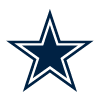
Round 1: Tyler Guyton, OT, Oklahoma (No. 29 overall)
Round 2: Marshawn Kneeland, DE, Western Michigan (56)
Round 3: Cooper Beebe, IOL, Kansas State (73) | Marist Liufau, LB, Notre Dame (87)
Round 5: Caelen Carson, CB, Wake Forest (174)
Round 6: Ryan Flournoy, WR, Southeast Missouri State (216)
Round 7: Nathan Thomas, OT, Louisiana (233) | Justin Rogers, DT, Auburn (244)
FILICE: Jerry Jones is absolutely fantastic for the entertainment value of this league. Why is that? Well, frankly, it’s largely because he overshares. No other owner is as accessible and open as the quirky Cowboys boss. Of course, sometimes the transparency leaves him open to receipts. Back in January, Jones told reporters at the Senior Bowl that the Cowboys were “all in” on the 2024 season. Consequently, Dallas’ quiet approach to free agency brought loud complaints from Cowboys fans. Regardless, just prior to this draft, the owner/president/GM doubled down on his increasingly infamous mantra for the coming campaign: “All in. All in. All in.” So … how exactly does this jibe with trading down in the first round before selecting a developmental offensive tackle? Don’t get me wrong: Tyler Guyton is an enchanting prospect, with the prototypical frame and plus athleticism to become a stud NFL bookend, but he’s raw, having made just 14 college starts at tackle. This leads us to the next adventure in oversharing. Late on Thursday night, after the conclusion of Round 1, Jones took part in the Cowboys’ press conference to recap Day 1 and look ahead to Day 2. Asked for his thoughts on running back prospect Jonathon Brooks — the University of Texas star EVERYONE had connected to the RB-needy Cowboys — Jones gushed in stunningly candid fashion: “In my 30 years, I thought it was the best interview that I’ve ever interviewed with a player. He’s outstanding. He’s just outstanding. And he’s a great football player — we got him high, high, high.” Jump-cut to Friday night, and the Panthers aggressively pounced on Brooks 10 picks before the Cowboys would be on the clock. Shockingly, Dallas never even addressed the position in the draft, ultimately bringing back old friend Ezekiel Elliott in an uninspiring move that feels ALL IN … the family. What have the Cowboys done this offseason to truly boost an offense that was overly reliant on CeeDee Lamb in 2023? Where are the invigorating new weapons?
Dallas did address two needs in the trenches on Day 2, drafting defensive end Marshawn Kneeland and interior offensive lineman Cooper Beebe. Beebe, taken with the third-round pick received in the first-round trade-down, could be the most pro-ready member of this draft class, with 48 college starts under his belt. If he can slide right into the center spot vacated by free-agent departure Tyler Biadasz, that’ll give this grade a bump.
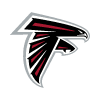
Round 1: Michael Penix Jr., QB, Washington (No. 8 overall)
Round 2: Ruke Orhorhoro, DT, Clemson (35)
Round 3: Bralen Trice, OLB, Washington (74)
Round 4: Brandon Dorlus, DL, Oregon (109)
Round 5: JD Bertrand, LB, Notre Dame (143)
Round 6: Jase McClellan, RB, Alabama (186) | Casey Washington, WR, Illinois (187) | Zion Logue, DT, Georgia (197)
FILICE: Through seven picks, this draft had an extraordinarily chalky feel. Then the Falcons dropped an atomic bomb on every mock in the known universe, selecting Michael Penix Jr. a month after giving Kirk Cousins a four-year, $180 million deal. I’ve spent a week searching for a tangible explanation of Atlanta’s process, but still feel lost.
Here’s what we know about the principle parties involved:
- Kirk Cousins: According to a text from his agent to NFL Network Insider Mike Garafolo, the veteran QB was as blindsided as the rest of us.
- Michael Penix Jr.: The rookie said he “had a very good conversation” with Cousins on draft night, understandably refraining from going into specifics.
- Terry Fontenot: The Falcons GM echoes everything we’ve heard about Atlanta being hell-bent on having a succession plan at the game’s most important position: “Our goal is to build a sustained winner.”
Here are my four biggest issues:
- The NFC South is there for the taking right now. The Bucs held the throne with a 9-8 record last season and an 8-9 mark in 2022. When Cousins signed with the Falcons, they immediately vaulted to the top of divisional odds. Sure feels like it’s GO TIME. If it’s not? Then Atlanta shouldn’t have given a soon-to-be 36-year-old quarterback $100 million guaranteed in the first place. If it is? Don’t you think this roster could use a closer off the edge? Well, on that front …
- The curse of John Abraham is alive and well. Since Atlanta released Abraham in March of 2013, exactly one Falcon has posted double-digit sacks (Vic Beasley in 2016). Fontenot and Co. had their pick of the pass-rushing litter in this draft, but they opted for a backup passer. Consequently, Atlanta’s edge-rushing unit is headlined by Arnold Ebiketie, Lorenzo Carter, Zach Harrison and rookie third-rounder Bralen Trice. Damn you, Abraham!!!
- This draft class does include some potential developmental quarterbacks — SEE: 21-year-old J.J. McCarthy, selected two slots after Atlanta’s pick — who could be well-served by a redshirt year or two. Penix … is not that. This man has 45 college starts under his belt and is days away from his 24th birthday. Even if the Flacons still view him as something of a developmental quarterback, spending the No. 8 overall selection on a developmental quarterback is the definition of a luxury pick, but Atlanta hasn’t had the luxury of a winning season since 2017. So all comparisons to Green Bay’s approach with Jordan Love or Kansas City’s top-10 selection of Patrick Mahomes just ring hollow.
- This grade will make people think I’m disparaging Penix. I’m not. In college football’s national semifinals, he artfully cooked a loaded Texas team that just set a program record with 11 players drafted. I was in awe of that performance, just like everyone else. What I’m disparaging here is the process. I didn’t understand it on draft night, I don’t understand it today and I’m unlikely to understand it for at least a few years, if ever. When such a bold decision is made with SUCH a premium pick, it acutely trumps everything else in the draft class. Thus, in the admittedly shortsighted, unfair exercise of instant draft grading, I’m forced to hand out a D. And in this instance, the D is for dumbfounding.



